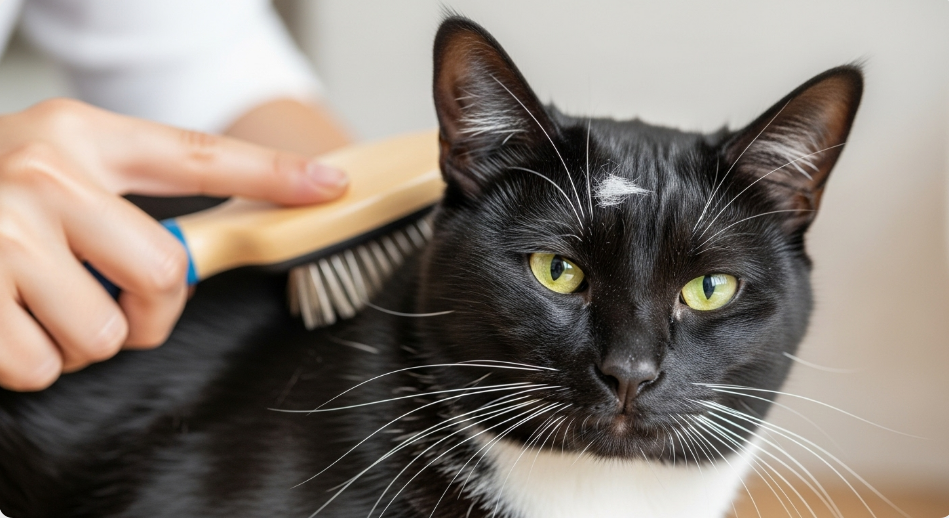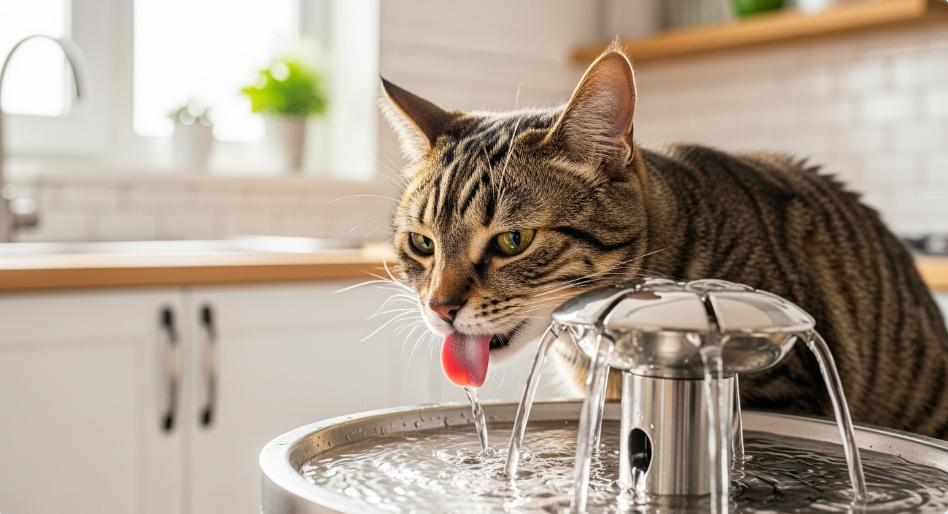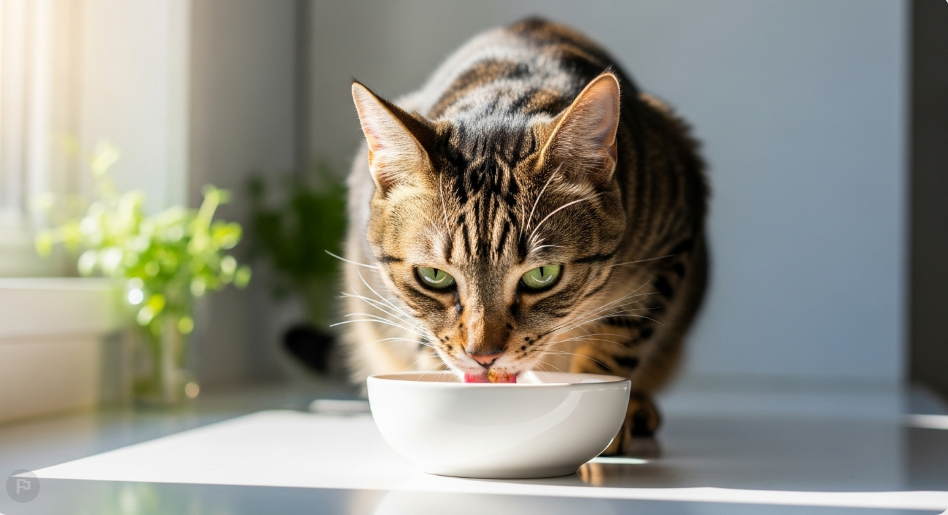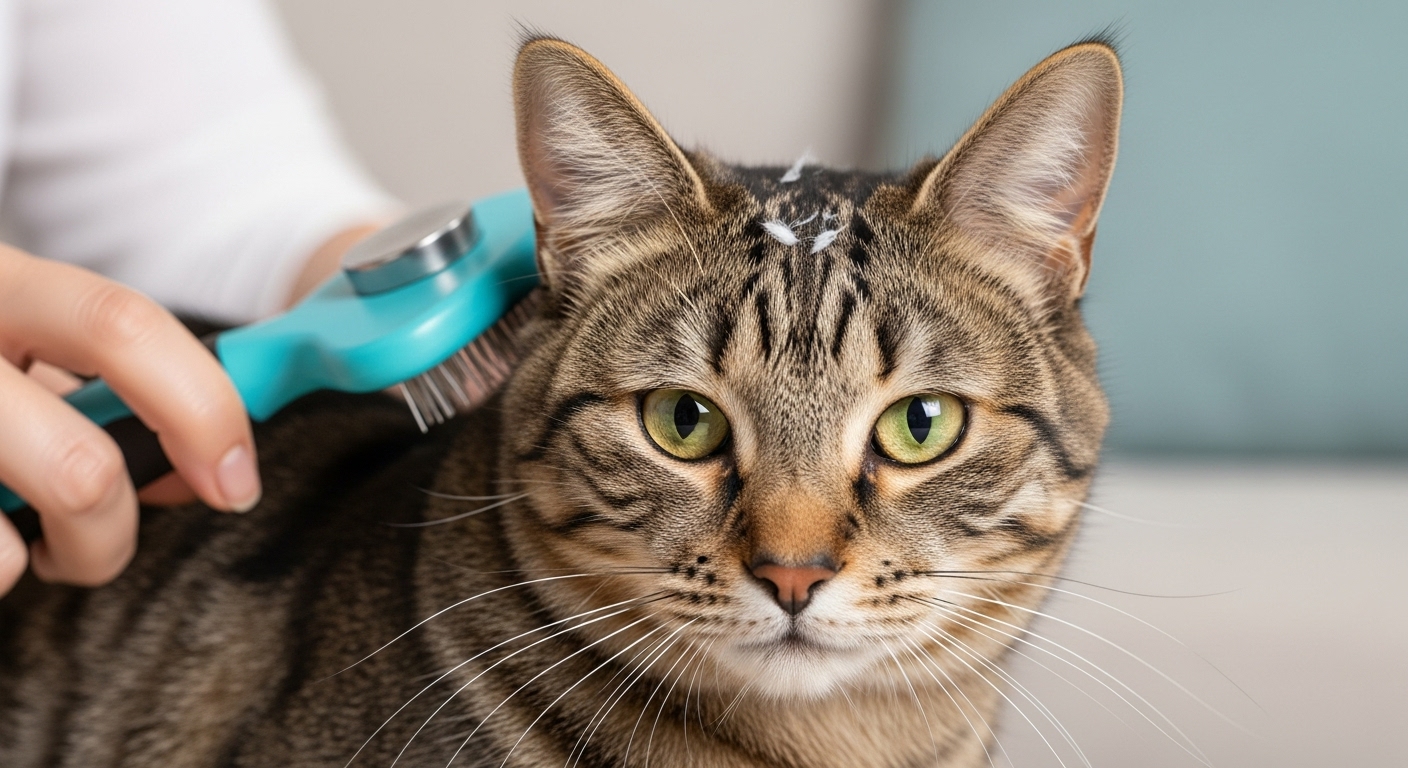Cat dandruff shows up as white or gray flakes in your cat’s fur. It’s common but can signal underlying issues. This guide explains why cats get dandruff, how to spot it, and what to do. You’ll find clear, practical steps to help your cat’s skin and coat stay healthy.

What Is Cat Dandruff?
Cat dandruff appears as visible white or gray flakes in your cat’s fur or on their skin. It’s different from dander, which is microscopic and normal. Dandruff often points to dry or oily skin and can cause itchiness. While small amounts are normal, excessive flakes may need attention.
Dandruff vs. Dander vs. Flea Dirt
- Dandruff: Larger, visible flakes from dry or oily skin.
- Dander: Tiny, invisible skin cells shed naturally. These can trigger human allergies.
- Flea Dirt: Black or brown specks (flea feces) that turn red when wet. Often found with fleas.
Learn more about keeping your cat healthy in our post on Can Cats Eat Bananas?
Common Causes of Cat Dandruff
Many factors can cause dandruff in cats. Here are the most common reasons:
1. Dry Skin
Low humidity, especially in winter, dries out your cat’s skin. Indoor heating worsens this. Dehydration from low water intake can also lead to flaky skin.
2. Poor Grooming
Cats usually groom themselves well. But obesity, arthritis, or age can make grooming hard. This leads to a buildup of dead skin cells. Long-haired cats are more prone to this.
3. Poor Diet
A diet lacking omega-3 fatty acids can dry out skin. Essential fats in fish oil or wet food help keep skin healthy. Malnutrition or low-quality food may also cause flakes.
4. Allergies
Food or environmental allergies (like pollen or dust) irritate skin, causing dandruff. Cats may scratch or over-groom, worsening the issue.
5. Parasites
Fleas, mites, or ticks can irritate skin, leading to flakes. Cheyletiella mites, called “walking dandruff,” are contagious and cause heavy scaling.
6. Infections
Bacterial or fungal infections, like ringworm, cause flaky skin. These need veterinary treatment.
7. Underlying Health Issues
Serious conditions like diabetes, hyperthyroidism, or cancer can affect skin health. Dandruff may be a symptom of these.

Signs of Cat Dandruff
Look for these symptoms to confirm dandruff and spot related issues:
- White or gray flakes in fur, especially on the back or tail base.
- Itchy skin, leading to scratching or licking.
- Red or inflamed skin patches.
- Hair loss or bald spots.
- Dull or greasy fur.
- Scabs or skin lesions.
If you see these with other signs like vomiting, weight loss, or lethargy, visit a vet immediately.
When to See a Vet
A small amount of dandruff is normal. But contact a vet if you notice:
- Excessive or persistent flakes.
- Itching, redness, or hair loss.
- Changes in appetite, thirst, or behavior.
- Fleas, mites, or ticks.
- Skin lesions or scabs.
A vet can run tests like blood work, skin scrapings, or cultures to find the cause.
How to Treat Cat Dandruff
Treatment depends on the cause. Here are vet-recommended solutions:
1. Improve Hydration
Ensure your cat drinks enough water. Use a pet fountain to encourage drinking. Add wet food to their diet for extra moisture.
2. Regular Grooming
Brush your cat 2–3 times a week with a cat-specific brush. This removes flakes and spreads natural oils. Be gentle to avoid irritation.
3. Use a Humidifier
A humidifier adds moisture to dry indoor air, especially in winter. Place it where your cat spends time.
4. Adjust Diet
Feed a balanced diet with omega-3 fatty acids. Fish-based wet food or vet-approved supplements can help. Avoid sudden diet changes—consult your vet.
Check out Why Do Cats Knead? for more on cat health and behavior.
5. Use Cat-Safe Shampoo
Bathe your cat with a vet-recommended, moisturizing shampoo for cats. Never use human shampoo—it can worsen dandruff. Bathe infrequently to avoid stripping natural oils.
6. Parasite Control
Use monthly flea and tick preventatives, even for indoor cats. If you suspect mites, a vet can prescribe treatment.
7. Treat Underlying Conditions
For serious issues like diabetes or infections, follow your vet’s treatment plan. This may include medications or special diets.
How to Prevent Cat Dandruff
Keep dandruff at bay with these tips:
- Feed a high-quality, balanced diet.
- Brush regularly to maintain coat health.
- Keep your home’s humidity at 40–60%.
- Use flea preventatives year-round.
- Schedule annual vet checkups to catch issues early.

People Also Ask
Can cat dandruff affect humans?
Most dandruff isn’t contagious. However, “walking dandruff” (Cheyletiella mites) can spread to humans or other pets. See a vet for treatment.
Is cat dandruff a sign of stress?
Yes, stress can cause skin changes, including dandruff. Reduce stress with a calm environment and playtime.
How often should I bathe my cat for dandruff?
Bathe every 1–2 weeks with a cat-safe shampoo, but not too often. Over-bathing strips natural oils.
Can diet alone fix cat dandruff?
A balanced diet helps, but severe dandruff may need vet treatment for underlying issues.
Conclusion
Cat dandruff is often manageable with simple changes like better grooming, hydration, or diet. But persistent or severe cases need a vet’s attention. Watch for signs like itching or hair loss. With the right care, your cat’s coat can stay shiny and healthy.
